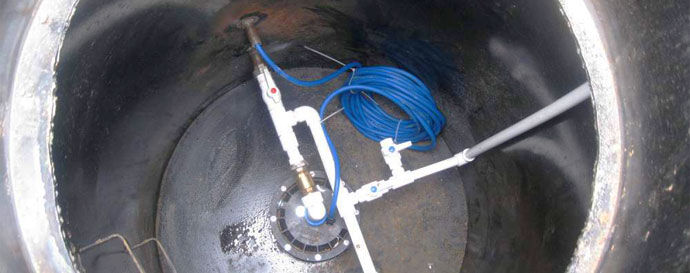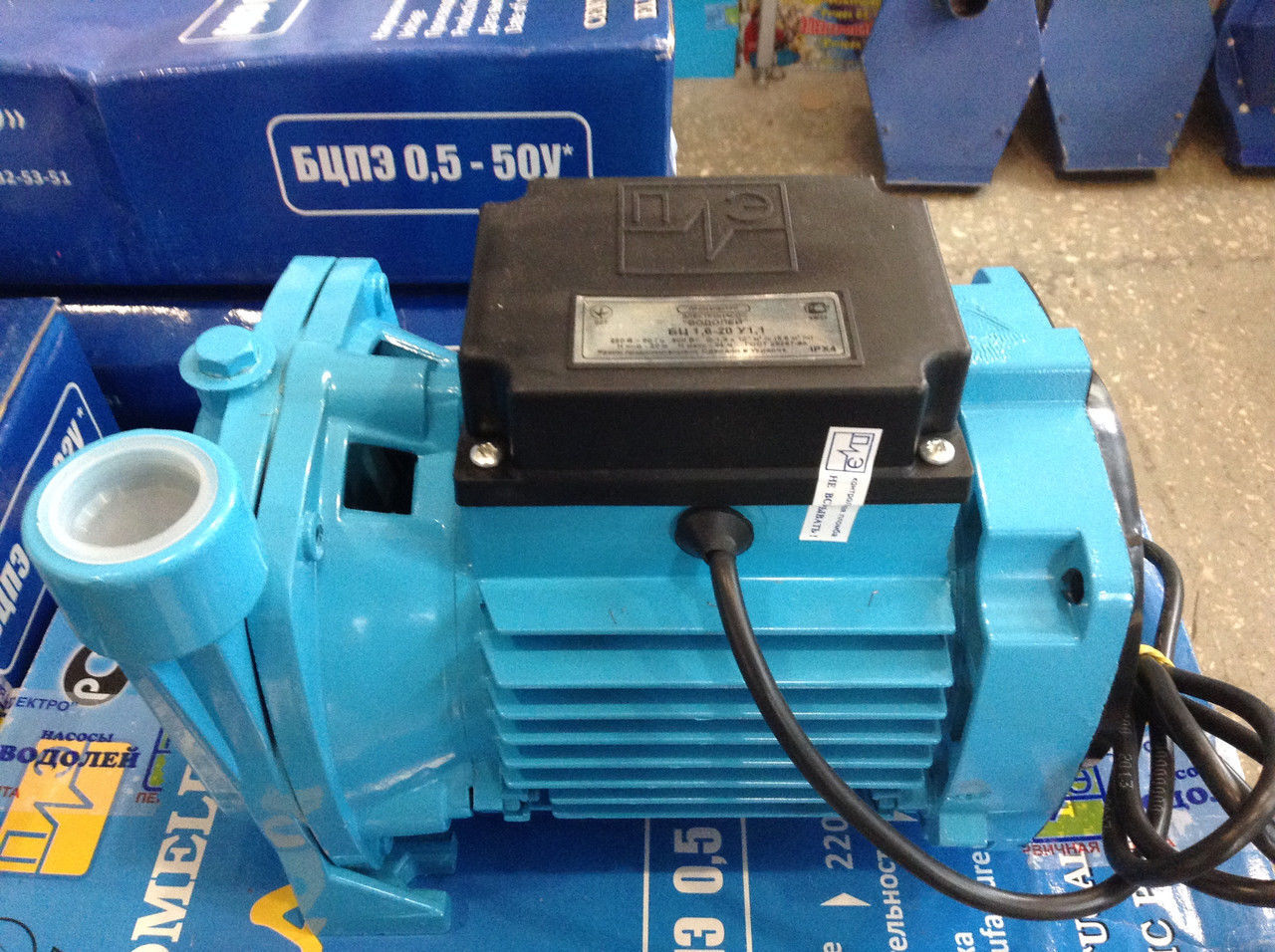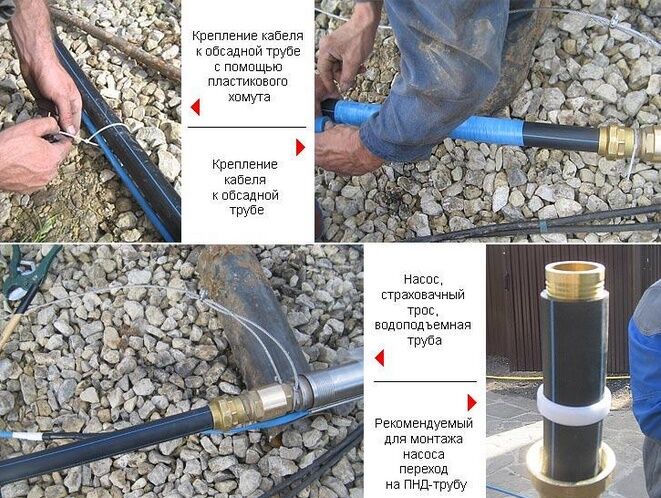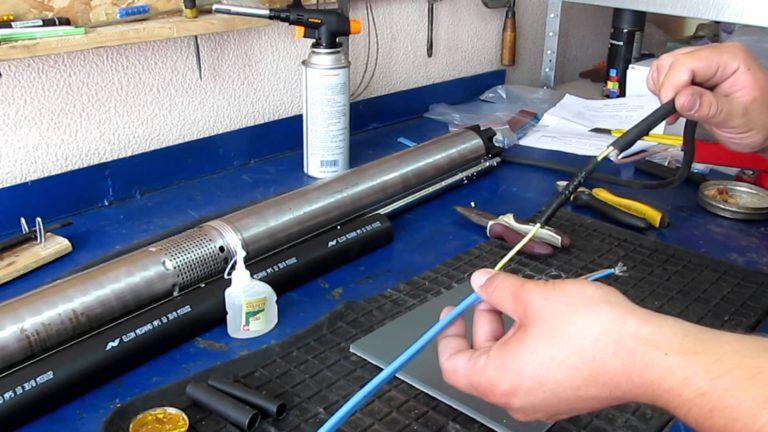Site sections
Editor's Choice:
- How to unlock the washing machine ariston
- Pros and cons of LED lighting
- Impulse relay: device and connection
- How to calculate the illumination of a room with LED lamps?
- Plastic box - aesthetic do-it-yourself wiring
- Electricity consumption of underfloor heating: electric and film
- Installing a pump in a well: how to properly install pumping equipment
- Electrician Tool Kit Overview
- How to choose a water heater: the most complete list of evaluation criteria
- 1 acoustics on the example of Sven SPS-860 and Realtek ALC889 codec
Advertising
| Installing a pump in a well: how to properly install pumping equipment |
|
Comfortable living in a private house depends on many factors, and its water supply plays an important role here. If there is already a well on the site, then the issue is half resolved. But to ensure a full-fledged water supply, you will need to choose a suitable pump, otherwise it will be difficult to get water from a deep and narrow hole, to put it mildly, do you agree? At first glance, installing a pump in a well seems to be a rather difficult task. Here, as in any business, there are a number of important nuances. Therefore, before proceeding with its solution, it is worthwhile to thoroughly approach the study of this issue. We will help you understand the intricacies of installing pumping equipment. Useful tips for installing surface and submersible pumps are set out in this material. Also here are photos and videos with expert advice that will help you better comprehend the intricacies of editing. First you need to select and purchase a suitable pump, as well as a number of materials required for its successful installation. The pump is usually taken submersible, while it is very desirable that it be centrifugal. Unlike centrifugal models, they cause dangerous vibrations in the well, which can lead to destruction of the soil and casing. Such models are especially dangerous for wells “on sand”, which are less stable than artesian counterparts. The pump power must match the well performance. In addition, consider the immersion depth for which the pump is designed. The model, designed to operate at a depth of 50 m, can supply water from a 60-meter depth, but the pump will soon break. A submersible centrifugal pump is the best choice for a well. Its performance, size and other indicators should be correlated with the characteristics of its own water source. Another risk factor is the quality level of drilling operations. If drilled by an experienced crew, the well will be better able to withstand the destructive impact. And for wells created by hand or by the efforts of “shabashniks”, it is recommended to use not just a centrifugal pump, but special models for wells. Such devices better withstand the loads associated with pumping water abundantly contaminated with sand, silt, clay particles, etc. Another important point is the diameter of the pump. It must match the dimensions of the casing. It is also important to take into account the features of the pump power supply. For wells, both single-phase and three-phase devices are used. It is easier to find the technique for four-inch pipes than for three-inch pipes. It is good if this point is taken into account even at the well planning stage. The greater the distance from the pipe walls to the pump housing, the better. If the pump goes into the pipe with difficulty, and not freely, you need to look for a model with a smaller diameter. Preparation of materials accompanying installationA pump stuck in the casing can be a headache. And it is necessary to pull it out (as well as to lower it) using a special cable. If the pump is already equipped with a polymer cord, you must make sure that it is of high quality and of sufficient length. Sometimes it is wiser to purchase this item separately. It is believed that a reliable cable or cord must be capable of carrying a load that is at least five times the weight of the equipment attached to it. Of course, it must tolerate moisture well, since part of it will constantly be in the water. If the device is suspended relatively shallow, less than ten meters from the surface, you need to take care of additional depreciation of the equipment during its operation. To do this, use a piece of flexible rubber or medical tourniquet. Metal rope or suspension wires are not suitable as they do not damp vibration but can destroy the mount. A special electric cable is used to power the pump. Its length must be sufficient so that the cable lies loose and not taut. To supply water from the pump to the household water supply, special plastic pipes are used. Designs with a diameter of 32 mm or more are recommended. Otherwise, the water pressure in the system will be insufficient.
For the installation of a submersible pump, a special cable is used, which is designed for long-term operation under water. Its cross-section must comply with the technical requirements specified in the product passport Both metal and plastic pipes can be used. There is controversy over the connection of metal pipes. Some experts object to the threaded connection as being less reliable. It is recommended to use flanges with the bolt on top to prevent it from accidentally falling into the hole. But the threaded connection in wells is used quite successfully. During installation, reeling is mandatory. Some experts recommend taking linen cloth or “Tangit” sealing tape instead of the usual FUM-tape or tow. Linen roll is additionally reinforced with silicone sealant or similar material. The characteristics of the water supply pipe should be selected in accordance with the conditions of its operation. For depths up to 50 meters, HDPE pipes are used, designed for a pressure of 10 atm. For a depth of 50-80 m, pipes will be needed that can operate under a pressure of 12.5 atm., And for deeper wells, pipes at 16 atm are used. In addition to the pump, pipes and cord or cable, it is recommended to stock up on the following materials before installing:
Before connecting the pipe to the pump, a nipple adapter must be attached to its outlet. Usually modern submersible pumps are equipped with such a device, but if it is not there, this unit must be purchased separately. It should be remembered that for pumping a well immediately after drilling, i.e. to remove a large amount of very dirty water from the well, such a pump cannot be used. It will quickly fail. Usually the well is pumped with a separate pump, which is cheaper and functions better when working with dirty water. Installation rules for the surface variantSurface pumps are not often used for this type of water supply, since they are only suitable for shallow waterworks, up to eight meters deep. And yet, such an option has the right to exist, and its installation is no more complicated than the installation of submersible equipment.
Surface pumps are easier to install and cheaper than submersible models, but they are only effective for wells up to eight meters deep Mount the device as follows:
At this point, the installation can be considered complete and a test run of the pump can be made. To install such a pump in a well, a special adapter is often used. In this case, the hose is connected to the adapter and the adapter is connected to the pump. Otherwise, the installation procedure is exactly the same. It is a little more difficult to carry out installation in a well of a surface pump equipped with a remote ejector. In this case, two hoses must be lowered into the well. In addition to the suction hose, a pressure hose is also mounted. It is connected to the side fitting of the ejector using a special branch.
The general scheme for installing a submersible pump and connecting all the necessary elements to the household water supply will help you better understand the order of installation work Now you should take the fixing clamps or special clips, and carefully connect the cable, electrical cable and pipe with them. The connection should be tight enough, but not overly rigid. If the clamp squeezes these structures too tightly, it can damage them. Step # 2. Submersion of the pump into the wellWhen all structures are connected, the preparation can be considered complete. You can start installing the pump in the well. First, a special rubber gasket is put on the casing and a head is installed. Then the pump is gently passed into the hole in the head and gradually lowered down.
Before starting the installation, you should study the instructions and the pump passport in detail, and after its completion, set the point of operation of the device in real conditions After the necessary measurements have been made, they should be compared with the manufacturer's data specified in the technical documentation of the product. If it turns out that the actual values exceed those recommended by the manufacturer, you should slightly close the pump valve. As a result, additional resistance will be created, which will bring the parameters of the device back to normal. Thus, the point of operation of the device is verified and set in different modes of its operation. A special brass fitting is used to connect the check valve to the water supply pipe. The connection must also have a special drive bush. This measure will prevent compression of the pipe in diameter and compensate for the excess stress created by the compression fitting. The fitting, like all connecting elements, must be of high quality, designed to withstand increased tensile loads. Otherwise, the pipe may simply pop out of the fitting. To connect the opposite end of the HDPE pipe with an outlet at the head, the same compression driven fitting made of brass is used. A special electric cable for submersible pumps is available for sale. It is he who must be used to connect to the pump. Substitutions for lower quality material are unacceptable. The power cable is connected to the pump cable by soldering; it is better not to use twisting in such an important place. The junction is closed with a heat-shrink sleeve. Plastic clamps are needed to secure the cable and cable to the water supply pipe. They are installed every 2-3 meters. This measure helps to avoid accidental tangling of the cable when lowering the structure down. Instead of clamps, you can use electrical tape.
Plastic clamps can be used to fasten the cable and cable to the water supply pipe. A special adapter will allow you to reliably connect the pump to the pipe For the sake of economy, a special cable is used only in the area where it will be immersed in water. The rest of the distance is covered with a conventional PVA cable. In any case, the cable cross-section must comply with the manufacturer's recommendations specified in the pump passport.
Soldering is performed at the junction of the power cable with the pump cable. After that, the cable is closed with a special heat-shrink sleeve. To install it, you will need a construction hairdryer. The pump can only be suspended with a stainless steel cable. Neither regular black steel nor its galvanized version is designed for continuous operation in water. When lowering the pump in narrow areas, it is possible to supplement the rotation of the pump with a slight pressure. But in any case, the pump must maintain an upright position. During installation, the pump may move slightly. Make sure that the weight of the pump rests on the cable and is not supported by the pipe. Only then can the head position be secured with screws. Conclusions and useful video on the topicVideo # 1. Practical advice on the selection and installation of a submersible pump can be found in the following video: Video # 2. A visual demonstration of another pump installation experience: It is very important to carry out all the operations for the installation of pumping equipment in the well correctly, since any negligence can result in a breakdown or a break in the cable. There are situations when damaged from working. This leads to a complete loss of the structure and makes it necessary to start drilling anew. Care and attention will help you install the pump in the best possible way. |
New
- Psychology of educational activity of a younger student. Psychological foundations of teaching a younger student.
- Introduction to the specialty
- Introduction to the specialty
- The psychology of teaching a younger student
- The transition to NEP and repression against dissent 20 30 years of the USSR
- Moscow State University of Press Features of the use of impersonal predicative words
- Responsibility falls on the shoulders of the farmer
- Keynesian model of macroeconomic equilibrium ("Keynesian cross")
- Business game "manager's work week"
- Moscow State University of Printing Arts Computer networks are not used












